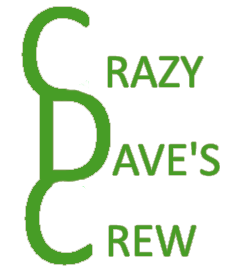You wouldn’t think the size of a geocache container would cause any confusion, but it does. Geocache containers come in many sizes and shapes. On the geocaching.com website, a helpful set of guidelines have been provided to give you an idea of the size of the container you are hiding or searching for.
Sizes available :
Although, I have seen geocache containers as small as pencil eraser and as large as small car, there are only five sizes that can be used when posting a new geocache.
Micro, small, regular, large and other are the only choices you get.
Sometimes it makes it difficult to pick the right size for your container since geocache containers can be in almost any shape designed to look like anything.
Sizes Explained, Sort of :
Micro –
A micro is any container less than 100 ml. I often see 35 mm film canisters or Altoids tins used for this size. But to make this just a little more difficult, micro also includes a “sub-type” called a nano. A nano cache is less than 10 ml (about the size of a pencil eraser) and only holds a very small log sheet.
Micros and Nanos are usually the hardest to find, especially if the coordinates are a little loose. These are typically found under a light pole skirt, or magnetically attached to a guard rail or a metal fence. I have, however, found them drilled into a rock in the middle of a pile of rocks. (Evil caches will be discussed in another post)
Small –
A small cache is larger than 100 ml up to about 1 L, about the size of a sandwich box. This is a favorite among many geocache hiders because they are easy to hide, inexpensive and still have a little room for a log book and some small trade items.
I have spent a lot of time wrapping peanut butter jars in camo duct tape over the last few years. I would consider these to be small.
Regular –
A regular geocache container is more than 1 L, but smaller than 20 L. These are probably the favorites of all geocachers. A large shoebox sized container or an average Ammo box would fit this size group nicely. We love them because there is plenty of space for a log book, a writing utensil, and lots of trade and trackable items.
The problem with this group is the good old-fashioned metal ammo can is becoming a thing of the past. They are harder to find and expensive when you do. I have recently come across plastic ammo cans for under $10.(We will have to see how that works out!)
Large –
A Large cache container is 20 L or larger. This would be around the size of a 5 gallon bucket.
Every geocacher looks forward to finding a large geocache container and will often go far out of their way to get it. (Being a large container also means it is hard to hide near areas that muggles might be.) The containers may contain unimaginable rewards – large trade items (or at least large quantities). These are usually worth a long hike.
Sadly, large containers are not used very often. In fact, you could look at any geocacher’s profile and see a very small percentage of their finds have been large containers.
Other –
Aah, yes and then there is the “other” size. What exactly does that mean?
Other is kind of a catch-all for oddly shaped containers that the cache owner is not sure how to size. With all of the great containers available for sale out there, you may not now what size to give it. Who could put a size on a fake pile of dog poo? Or what size would be right for a fake birds nest? And then there are lots of fantastic homemade containers.
Also, and more likely, this size is used if the cache owner doesn’t want to give the hide away by giving a size. Many geocache hides are done in such a way you would walk right to it, had you known the size. Most of the time, there will be come clues within the geocache description page when this size is used, but not always. (Some CO’s are just evil.)
Size Does Matter
Knowing the right size is important, but the information given here and on the geocaching.com help pages are primarily guidelines, not rules. When listing a geocache, size is subjective and each CO may see it differently.
Most important is to try to make geocaching fun for everyone. If you vary too much from these guidelines, the finders may become frustrated when searching for your cache.
Follow the guidelines and we will love you for it.







Leave a Reply
Want to join the discussion?Feel free to contribute!